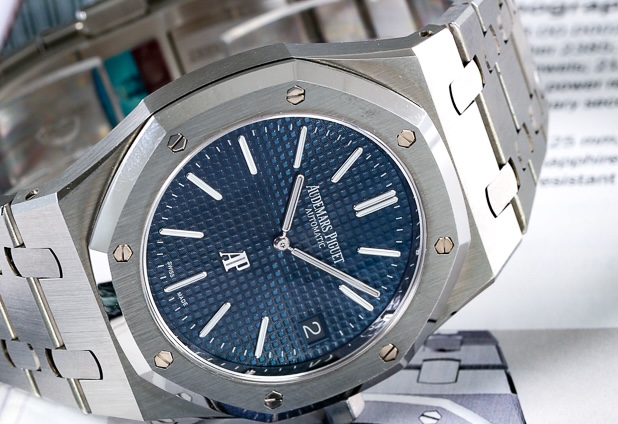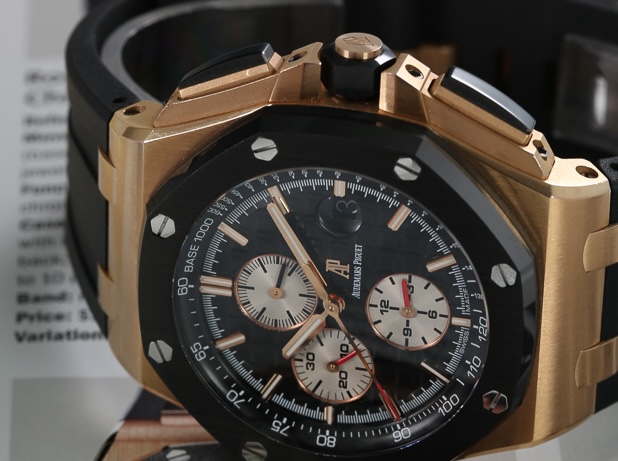There’s no denying that the Audemars Piguet Royal Oak and Patek Philippe Nautilus are two of the most beloved luxury watches in the world. Getting to this point didn’t come without risk though, as both timepieces represented a significant shift away from what the manufacturers were producing at the time — a gamble that really paid off.
Given their close connections and similar attributes, it’s almost impossible to mention one without the other. Indeed, luxury watch aficionados have often sought to pit one against the other, to find out which of these geometric greats is truly the best.
So, when it comes to the Audemars Piguet Royal Oak vs Patek Philippe Nautilus, which one comes out on top? Join us as we delve into the background of the two icons and how they turned the world of haute horlogerie on its head.
Emerging from the Crisis
In the 1970s, the luxury watch market was practically on its knees. Low-cost quartz timepieces were flooding the market,
undermining all the fine craftsmanship that had become the norm in the industry. Quartz was seen by many to be easier to maintain, more cost-effective, and more accurate.
With established brands already going out of business, it was clear something had to be done to arrest the decline. What followed was one of the most bold decisions that propelled firstly Audemars Piguet, then Patek Phillipe to greatness.
Style Over Substance
At the time of the Quartz Crisis, the luxury watch market was primarily built on precision and reliability. The arrival of cheaper alternatives had pretty much made the grand complications of the older timepieces obsolete, so something new was needed to give the established brands a fighting chance.
Step forward Audemars Piguet, who decided the best way to go upmarket was to sell sophistication rather than just simply functionality. In 1972, the company approached designer Gérald Genta to provide them with “a steel sports watch that had never been done before”. Infamously, Genta designed the timepiece that would later become the Royal Oak in just a few hours, the night before that year’s Swiss Watch Show (now known as Baselworld).

Retailing at more than many gold watches of that era, the Royal Oak was an expensive experiment — and it took a little while to catch on. This is largely because it represented a major shift from the perception from many at the time of what a timepiece should look like. Unlike the intricate models everyone had become accustomed to, this was a watch that just told the time, had no strap, and had a sleek and sporty presence rather than some grand design.
Once sales of the Royal Oak started to pick up and prove the doubters wrong, it was Patek Philippe’s turn to approach Gérald Genta and ask him to create their flagship timepiece. So, in 1976, the Nautilus was born and the iconic duo was complete. Both watches soon became symbols of wealth and luxury, with the elite proud to have the most expensive watches in the world on their wrists — the gamble had paid off in grand style.
Patek Philippe Nautilus vs Audemars Piguet Royal Oak: Head to Head
So now it comes to comparing the Audemars Piguet Royal Oak vs Patek Philippe’s Nautilus. Does one outmatch the other, or are they each other’s equal? Join us as we compare the two across a number of different categories.
Inspiration
Both of these exquisite timepieces drew inspiration from the nautical world, with the Royal Oak designed to resemble the window of a diver’s helmet and the Nautilus modelled after a ship’s porthole. Audemars Piguet’s watch was named after a series of vessels in the Royal Navy, while Patek Philippe’s product was an homage to the submarine in Jules Verne’s 20,000 Leagues Under the Sea.
Design
The Royal Oak featured a case that was 41mm in diameter (with other sizes becoming available), eight hexagonal H-shaped screws, and a see-through sapphire crystal on the back. Boasting a polished finish, the watch was designed to mimic how a diver’s helmet used compression to seal it from water — with the bezel screws penetrating all the way through the case to clamp everything together. Of course, perhaps the most iconic elements of the design are the octagonal bezel, protruding screws, and integrated bracelet, which were a far cry from everything else that was available up until this point.
On the other hand, the Nautilus was 40mm in diameter and featured a brushed surface with smoother edges that appeared to be more curved than its counterpart. The case has a hinged setting on its side to replicate the aesthetic of a porthole, a crown guard (something that was missing from the Royal Oak), and a sapphire crystal on the back. Its dial and movement were set within the case from the front and its overall design came across as more finessed than Audemars Piguet’s model.
Dial
The Royal Oak’s signature Tapisserie pattern on the dial arguably makes it more unique than the Nautilus. Its square motifs use natural light to make the dial more legible, while the date window is relatively small and compact. Meanwhile the Nautilus features horizontally embossed bars which also reflects natural light, while its hands are strategically designed to match the spacing on the dial. Its luminescence also makes nighttime viewing much easier.
Bracelets
The solid, chunky aesthetic of the Royal Oak’s bracelet enhances its overall ruggedness. Its brushed texture evokes a feeling of strength, while the intermediate plot links practically give off a jewellery feel rather than a watch. On the other hand, the Nautilus has a sleeker bracelet design with sausage shaped centre links that complement the hour markers and handset. It has a much smoother, refined look versus its counterpart.
Trendsetting
There can be only one real winner here. Given the fact it came first, the Royal Oak can be viewed as the watch that started the market’s push towards more stylish products that were seen as status symbols on the wrist. It can also be assumed that the success of Audemars Piguet’s model paved the way for the Nautilus to exist, given its similar aesthetic.
Spin Offs
While the Nautilus has had several iterations, the Royal Oak has spawned a secondary collection — the Offshore. Designed by Emmanuel Geit, the Offshore has a more bulky frame than the original. In addition, Audemars Piguet has added a host of complications to both Royal Oak collections, such as tourbillons and perpetual or annual calendars.

While Patek Philippe has diversified its portfolio across a number of different collections, Audemars Piguet has largely centred its offering around the Royal Oak and Offshore. This means that although the Nautilus remains extremely important, the entire Patek brand isn’t built around this one range. AP, on the other hand, has pretty much become synonymous with the Royal Oak.
Demand
When it comes to demand, the Nautilus traditionally has the upper hand. There could be a number of reasons for this, such as the high auction prices recently achieved by the Tiffany-stamped versions of the collection, or the fact that Patek’s model is more rare than the Royal Oak. While both maisons typically produce a similar amount of timepieces each year, the majority of Audemars Piguet’s eggs are in a Royal Oak shaped basket, while Patek Philippe spreads its quota across several different ranges.
Audemars Piguet Royal Oak vs Patek Philippe Nautilus: Which is Better?
Ultimately, the outcome of the Audemars Piguet Royal Oak vs Patek Philippe’s Nautilus comes down to personal preference. Those who enjoy a more rugged aesthetic will prefer the Royal Oak, while aficionados of a sleeker design tend to gravitate towards the Nautilus.
If you value watches with a revolutionary attitude, then the Royal Oak is for you. People who enjoy “hype” watches are more likely to be fans of the Nautilus, given its relative rarity.
Whichever camp you’re in, it’s impossible to go wrong with either of these legendary collections. Their iconic designs ushered in a new era of haute horlogerie and brought the luxury watch market from the brink of disaster, instead giving it a much brighter future.
Buy Both with Blowers Jewellers
Whether you’re looking for a Royal Oak, Nautilus, or any other luxury watch for that matter, Blowers Jewellers should be your first port of call. For over 50 years, we’ve cultivated a reputation for excellent service and a high level of expertise.
Each and every timepiece we stock has been hand-chosen by our team of experts, so you can be totally confident in its quality. We always ensure we provide you with the most competitive price and are always on hand to offer guidance throughout the purchasing process.
If you’re ever unsure about which watch is best for you, our team will work to gain a thorough understanding of your tastes before recommending the most appropriate timepiece to suit your style. A holistic service from enquiry to purchase is what you can expect from us. For more information about how Blowers Jewellers can help, contact our team today.
